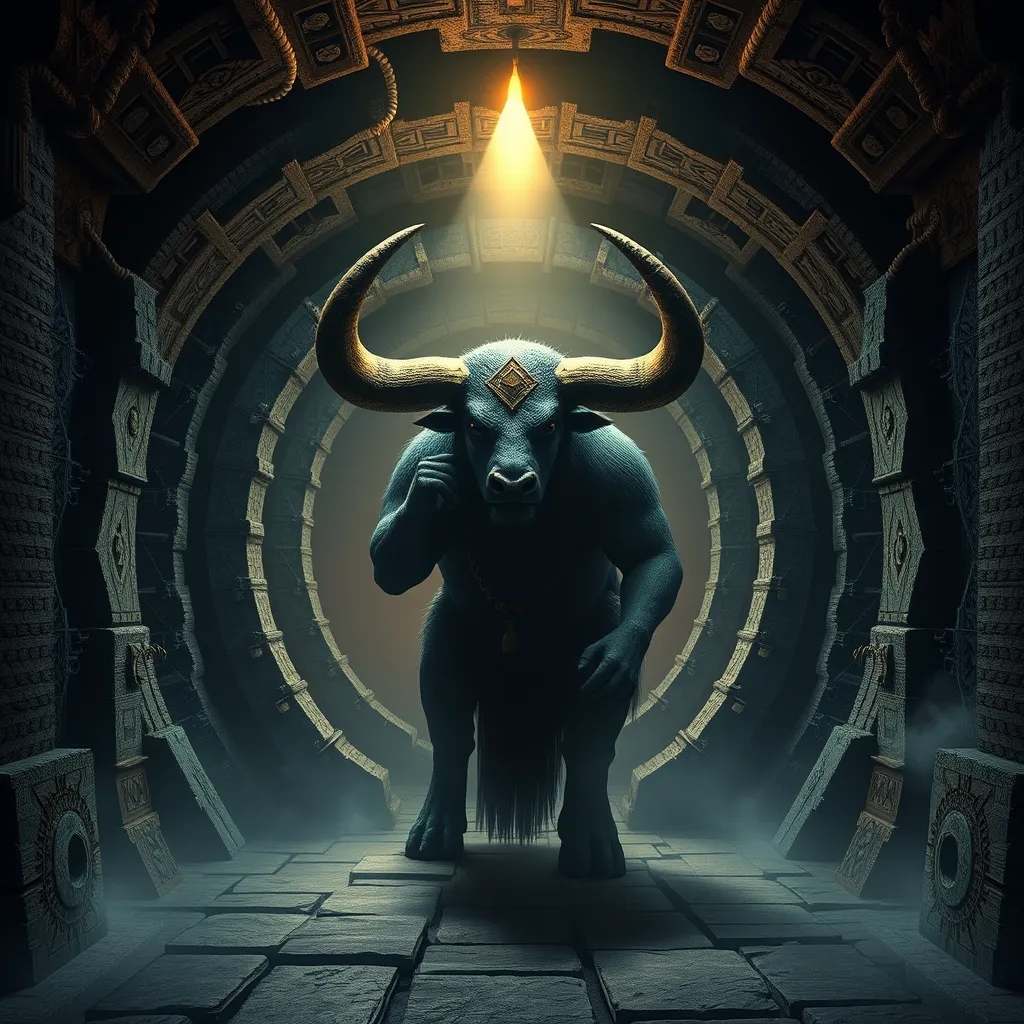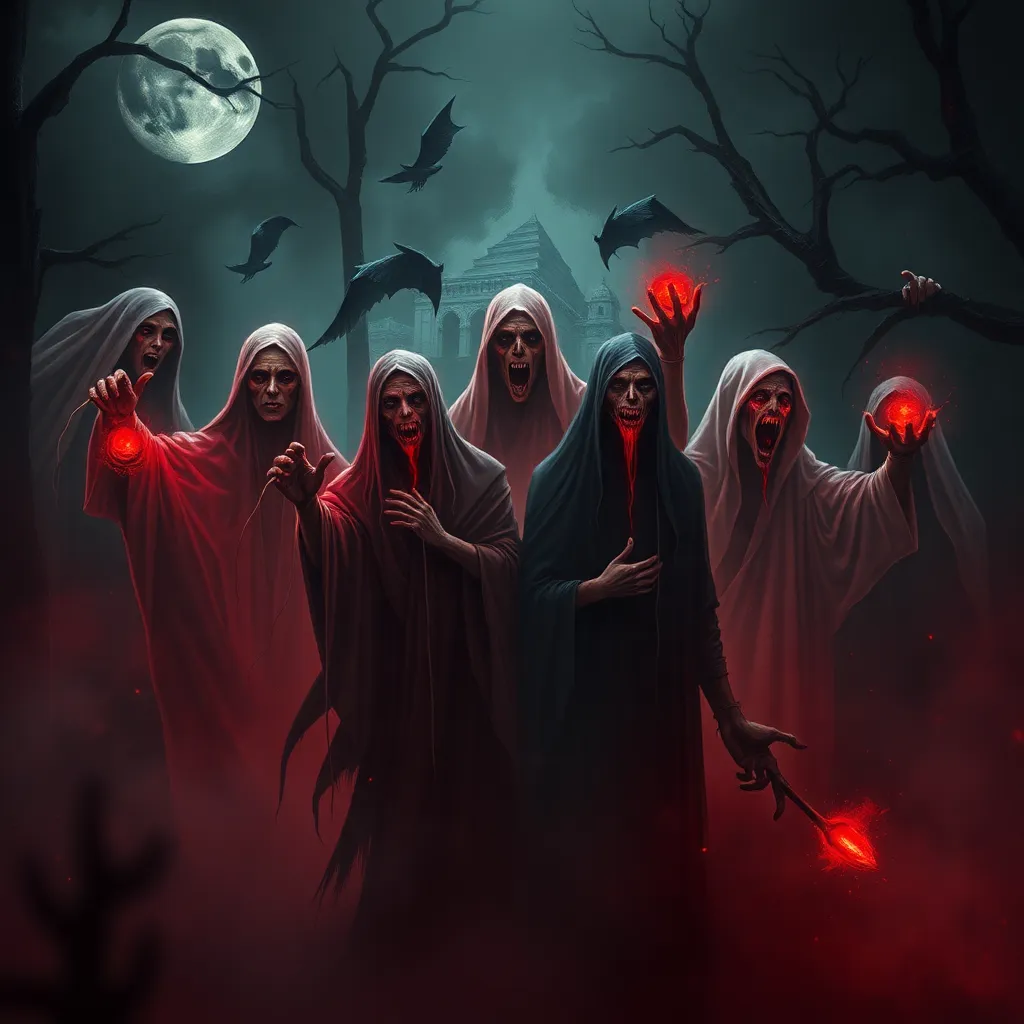The Labyrinth’s Secrets: Uncovering the Hidden Meanings of the Minotaur Myth
I. Introduction
The myth of the Minotaur is one of the most captivating tales from ancient Greek mythology. It tells the story of a creature that is half-man and half-bull, confined within a complex labyrinth designed by the ingenious craftsman Daedalus. This myth serves not only as an entertaining story but also as a rich tapestry of meanings that reflect the complexities of human nature and societal values.
Myths like the Minotaur’s play a crucial role in understanding cultural narratives, providing insight into the beliefs, fears, and aspirations of the societies that created them. They serve as a mirror, reflecting the human experience in various forms. This article aims to delve into the hidden meanings and interpretations of the Minotaur myth, exploring its origins, symbolism, and enduring relevance.
II. The Origin of the Minotaur Myth
The origins of the Minotaur myth can be traced back to ancient Crete, where the tale was likely shaped by various historical and cultural influences. The primary sources of the myth include ancient texts by writers such as Homer and Ovid, as well as archaeological findings from the Minoan civilization.
Key figures in the myth include:
- King Minos: The ruler of Crete, who commanded the construction of the labyrinth to contain the Minotaur.
- Daedalus: The master craftsman who designed the labyrinth, symbolizing ingenuity and creativity.
- The Minotaur: The monstrous offspring of Queen Pasiphaë and a bull, representing the darker aspects of human nature.
The labyrinth itself is significant as it represents not only a physical space but also the psychological complexities of life and the struggles one must navigate.
III. Symbolism of the Labyrinth
The labyrinth is a powerful symbol within the myth, often representing:
- Complexity and Confusion: The intricate pathways of the labyrinth mirror the complexities of life, where individuals often feel lost and disoriented.
- Psychological Interpretations: The journey through the labyrinth can be seen as a metaphor for the inner journey into the subconscious, where one confronts fears and desires.
- Cross-Cultural Connections: Similar labyrinths appear in various cultures, symbolizing the universal struggle to find one’s way and make sense of existence.
IV. The Minotaur: A Dual Symbol
The Minotaur embodies a duality that reflects both fear and the complexity of human nature. On one hand, the Minotaur represents:
- Fear and Monstrosity: The creature’s terrifying form evokes fear, representing the monstrous aspects of humanity that society often seeks to suppress.
- Instincts and Desires: The Minotaur also symbolizes the primal instincts and desires that reside within every person, suggesting that these aspects cannot be ignored or eliminated.
Additionally, the Minotaur plays a role in societal and moral lessons, serving as a cautionary figure that challenges heroes and forces them to confront their own darkness.
V. Themes of Sacrifice and Redemption
Central to the Minotaur myth are themes of sacrifice and redemption. The significance of tributes and sacrifices is evident in the narrative, where Athenian youths are sent as tributes to be devoured by the Minotaur. This act of sacrifice highlights:
- Societal Expectations: The sacrifices made reflect the societal norms and pressures that individuals face.
- Personal Growth: The journey of Theseus, who volunteers to confront the Minotaur, serves as a metaphor for heroism and personal development.
Theseus’s victory over the Minotaur symbolizes redemption through confrontation, suggesting that true growth often requires facing one’s deepest fears.
VI. Feminine Archetypes: Ariadne and the Labyrinth
Ariadne’s role in the myth is pivotal, as she provides Theseus with the means to navigate the labyrinth and ultimately defeat the Minotaur. Her significance extends beyond mere assistance:
- Guide and Support: Ariadne symbolizes guidance and the wisdom that is often overlooked in the face of heroism.
- Feminine Wisdom: The interplay between Ariadne’s intelligence and Theseus’s strength highlights the importance of collaboration in overcoming challenges.
The myth underscores the importance of companionship and support, suggesting that personal journeys are rarely undertaken alone.
VII. Modern Interpretations and Adaptations
The Minotaur myth continues to influence contemporary literature, art, and psychology. Its themes resonate with modern audiences, and various analytical perspectives have emerged:
- Psychoanalysis: The Minotaur is often examined as a representation of the unconscious mind and repressed desires.
- Feminism: Scholars explore Ariadne’s role as a symbol of female empowerment and the complexities of gender dynamics.
- Existentialism: The labyrinth serves as a metaphor for the human condition, reflecting the search for meaning in a chaotic world.
The myth’s relevance in today’s society encourages individuals to embark on their own journeys of self-discovery and confront their personal Minotaurs.
VIII. Conclusion
In exploring the hidden meanings and interpretations of the Minotaur myth, we uncover a rich narrative that delves into the complexities of human existence. The enduring legacy of the Minotaur and the labyrinth invites us to reflect on our own lives and the challenges we face.
As we navigate our personal labyrinths, we are encouraged to confront our fears and desires, much like Theseus did. The Minotaur myth serves as a timeless reminder of the importance of courage, support, and the quest for understanding in the journey of life.



